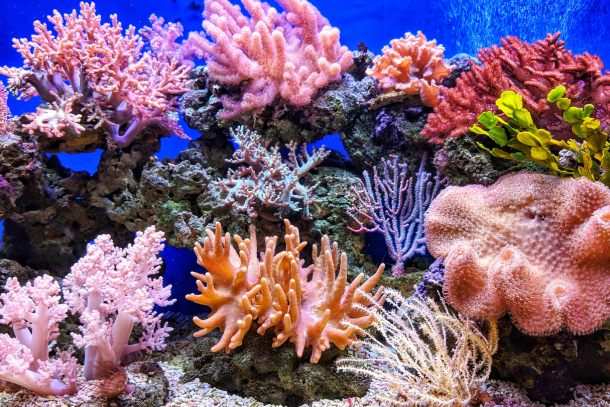Nature as Muse: Let the Outdoors Guide Your Artistic Endeavours
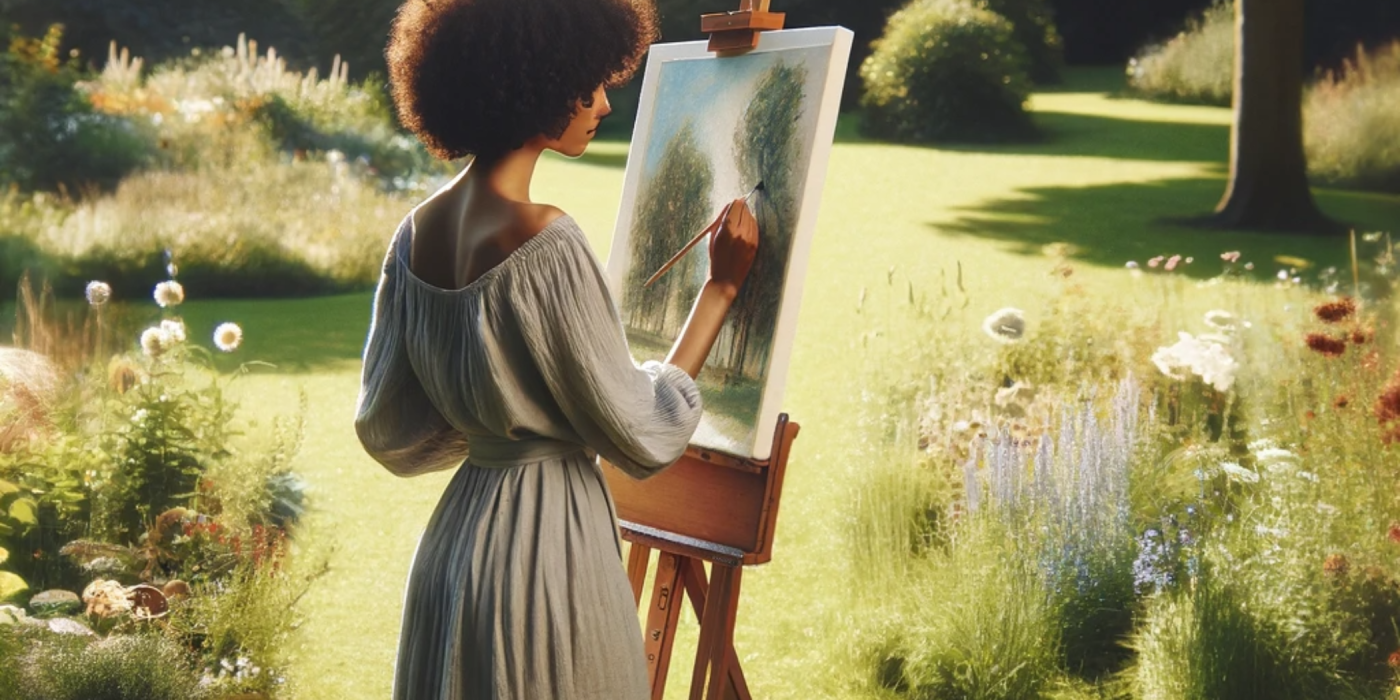
For countless generations, the natural world has played muse to the artist's hand. Rolling meadows, rugged coastlines, and the serene repose of woodland dells have all whispered their secrets to those with ears attuned, from the daubing fingers of a cave painter to the poised brushstrokes of the Romantic era's finest.
The Timeless Bond Between Art and Nature
Nature, in all its splendid variety, has been an unwavering source of artistic inspiration. The very essence of nature – its cyclical rhythms, dramatic interplays of light and shadow, and the intricate patterns etched across its canvas – has a magnetic allure. This connection runs deep, transcending cultures and epochs, echoing in the hallowed halls of galleries where nature's portrayal in art traces back to ancient civilisations.
Nature as the Artist's Muse
Throughout the annals of art history, nature has remained a steadfast muse. From the meticulous details of the Renaissance botanical illustrations to the evocative landscapes of Turner, nature's influence is omnipresent. It has not just been about faithful reproductions but also about capturing the emotion, the essence, and the very spirit of the natural world. Whether through the abstract interplay of colours or the precise replication of a bird's flight, artists have sought to encapsulate the myriad wonders and moods that nature unfurls.
In the ensuing sections, we shall explore the various ways modern artists can harness this age-old inspiration, diving into techniques, mediums, and insights that can transform a simple nature walk into a journey of artistic revelation.
The Artist's Eye: Seeing Nature Differently
For many, nature is a place of solace and rejuvenation. For artists, it becomes a canvas of infinite possibilities, a source of inspiration that's as ever-changing as it is constant. The artist's eye, trained to see the world in a myriad of colours, shapes, and emotions, perceives nature with a unique depth and sensitivity.
Observing the Details
Nature, in all its grandeur, is a symphony of intricate details. From the delicate veins of a leaf to the ever-shifting play of light on a babbling brook, every element tells a story. Artists possess an innate ability to hone in on these subtleties, bringing them to the forefront in their work. This keen observation, often overlooked by the casual observer, becomes a defining trait of the artistic temperament.
Nature's Transformative Influence
The natural world doesn't just serve as a passive backdrop for artistic endeavours; it actively shapes and refines artistic vision. Every rustle in the foliage, every flutter of a bird's wing, serves as a lesson in movement, colour, and form. Over time, the constant communion with nature moulds the artist's perception, enriching their repertoire and elevating their craft. The dynamic landscapes, with their ever-changing moods, challenge artists to adapt, experiment, and evolve.
In essence, while nature offers a feast for all eyes, through the lens of an artist, it becomes an immersive experience, a dance of observation and creation that is both introspective and expansive.
Nature has been the subject of countless photographs, each telling a unique story of a fleeting moment in time. The raw beauty of the natural world, with its ever-changing light, patterns, and moods, presents an abundant source of inspiration for photographers. To truly encapsulate the spirit of nature, there are several key elements to bear in mind.
Tips for Captivating Nature Photographs
-
Research Your Location: Before heading out, get to know the location. The best times for shooting, possible weather conditions, and points of interest can greatly influence your photographic results.
-
Use the Golden Hour: This period, shortly after sunrise and just before sunset, offers the softest and most golden-toned light, ideal for nature photographs.
-
Experiment with Different Perspectives: Rather than shooting from eye level, try getting down low or finding a higher vantage point. This can bring a fresh perspective to familiar scenes.
-
Be Patient: Nature operates on its own timetable. Sometimes, the most magical moments are those you wait for, be it the flight of a bird or the perfect ripple on a pond.
Understanding Core Elements
Lighting
Lighting can make or break a photograph. The direction, quality, and colour of light can dramatically change the mood and detail of an image. Overcast days can offer diffused light, which is particularly good for capturing details in flora and fauna.
Angles
Angles can introduce depth and drama. Consider the rule of thirds, place subjects off-centre, or use leading lines like paths or streams to guide the viewer’s eye.
Composition
A well-composed photograph tells a clear story. Be mindful of background distractions, ensure subjects are in focus, and use natural frames, like tree branches or archways, to enhance your subject.
Incorporating these techniques and principles will elevate your nature photography, allowing you to capture the essence and beauty of the world around you.
Painting En Plein Air: Nature's Studio
From the rolling landscapes of the British countryside to the bustling heart of London's parks, painting en plein air – or 'in the open air' – offers artists a direct dialogue with their surroundings. This form of artistic expression not only enables a raw capture of the environment but also immerses the artist in the ever-changing dynamics of light, weather, and movement.
The Rich Tradition of Outdoor Painting
Historically, artists took to nature to find a sense of realism, grounding, and immediacy in their work. Pioneered by the Impressionists in the late 19th century, this technique was a revolutionary shift from studio-bound practices. It allowed for spontaneous brushwork, capturing fleeting moments and the play of natural light. In the UK, artists such as John Constable epitomised this approach, often wandering the fields and forests with easel and palette in tow.
Modern Resurgence
While the digital age has brought art into the virtual realm, there is an unmistakable revival of en plein air painting. Today's artists, seeking authenticity and a break from screens, are re-embracing the tactile experience of painting outdoors. They're not only connecting with art's roots but also challenging themselves with nature's unpredictable elements.
Setting Up Your Natural Studio
Whether a seasoned professional or an enthusiastic amateur, some essential tools and materials can optimise one's outdoor painting experience:
- Canvas & Easel: Choose lightweight materials for mobility.
- Palette & Brushes: A mix of sizes and shapes to capture diverse elements.
- Weather Protection: Umbrella or canopy for shade or unexpected rain.
- Notebook: Jot down observations or sketch preliminary designs.
In essence, painting en plein air is a dance between artist and nature. It's a communion, a challenge, and above all, a celebration of the world around us.
Sketching and Drawing: The Art of Quick Observation
The British countryside, with its undulating hills, dense woodlands, and myriad of wildlife, offers boundless opportunities for artists to practise the art of sketching and drawing. Unlike a prolonged painting session or setting up for a perfect photograph, sketching in nature demands quick observation, a keen eye for detail, and the ability to capture the essence of a moment before it changes or flits away.
Techniques for Quick Sketches in Nature
Sketching on the go, especially in nature, is a test of an artist's agility and adaptability. Begin with loose gestures, letting your hand flow freely without concern for precision. This helps capture the basic shape and movement of your subject, be it a darting squirrel or swaying grass.
Focus on major shapes first, ensuring the overall composition fits and feels balanced on your page. As you grow more confident, refine the sketch by adding details, shadows, and textures.
Remember, it's often the imperfections in rapid sketches that imbue them with character and spontaneity. So, let go of the quest for perfection and embrace the quirks.
Choosing the Right Materials and Tools
A lightweight sketchbook is essential. Opt for one with a hardback cover for support, especially if you're drawing without a table.
Pencils of varying hardness are ideal, with softer pencils (like B or 2B) perfect for quick shading, and harder pencils (like H or HB) suited for finer details. A good eraser and sharpener are also indispensable.
If you're adventurous, consider including charcoal or ink pens. These can add depth and contrast, elevating your sketches to a new dimension.
Lastly, remember to enjoy the process. Nature's ever-changing canvas challenges us, but therein lies the thrill – capturing fleeting moments with just paper and pencil.
Immersion: Truly Being Present in Nature
Nature, with its ever-changing scenes and sounds, offers a vibrant tapestry for artists to draw from. To truly capture its essence in one's art, a deep connection and presence in the moment are crucial. This connection is more than just a casual observation; it's a form of immersion that can profoundly affect the depth and emotion of an artistic creation.
Mindfulness in Artistic Observation
Being mindful is about being fully engaged with your surroundings, soaking in every detail, every hue, and every texture. For an artist, practising mindfulness allows them to truly "see" and not just look. The rustling leaves, the ripple of water, the patterns on a butterfly's wings—all these minute details can be easily missed in the hustle and bustle of daily life. But when observed mindfully, they can provide unparalleled inspiration. This mindful observation translates to richer, more detailed, and more emotive artworks, be they photographs, paintings, or sketches.
Enhancing Depth and Emotion in Creations
When an artist is deeply immersed in nature, their creations resonate with a sense of authenticity and genuine emotion. This depth is often evident in the brush strokes, the play of light and shadow, and the composition of a piece. Immersion paves the way for art that is not just a mere representation of nature, but an interpretation imbued with personal experiences, emotions, and insights.
In conclusion, the act of immersing oneself in nature and practising mindfulness can be transformative for artists. It allows them to connect deeply with their surroundings, leading to artworks that are not only visually stunning but also emotionally resonant.
Nature's Colour Palette
Nature is the most prolific artist, painting landscapes in hues that astound and inspire. For generations, artists have tried to capture these colours, infusing their pieces with the very soul of the scenes they behold. The challenge and joy lie not only in replicating these shades but also in capturing the emotions and stories they tell.
Analysing Nature’s Myriad Colours
Every visit to the great outdoors reveals a palette richer than any artist’s collection. Consider the golden ochres of autumn leaves, the deep blues of twilight skies, or the fresh greens of new spring growth. The variation even in a single sunset, with its flaming oranges, purples, and pinks, is staggering. But how does one go about replicating these?
Start by truly observing. Carry a colour swatch or a palette to match colours in real-time. Take photographs for reference, though remember that cameras might not always capture the subtleties of certain shades. Training the eye is key, as is practice. With time, the fingers will learn to mix and match, bringing canvases alive with nature's brilliance.
Emotions Evoked by Natural Hues
Colours are more than just visual stimuli; they're experiences, memories, feelings. The serene blue of a still lake might evoke peace, while the fiery red of autumn can stir passion. As artists, tapping into these emotional responses can elevate a piece from mere representation to evocative artistry. By understanding the moods associated with various hues – the tranquillity of greens, the melancholy of greys, the energy of yellows – artists can better communicate their own emotional landscapes, shaped and coloured by nature's hand.
Inspiration from Nature's Patterns and Textures
Nature, in all her resplendent glory, offers a veritable treasure trove of intricate patterns and tantalising textures for the keen artist's eye. These unique facets of the natural world have inspired countless masterpieces, and delving into them can profoundly enhance one's artistic journey.
Observing Intricate Patterns
The world around us is brimming with intricate designs, many of which often go unnoticed in our daily lives. From the symmetric beauty of a fern's fronds to the mesmerising patterns on a butterfly's wings or the labyrinthine veins of a leaf, nature is a canvas of detailed artistry. For an artist, it's a lesson in patience and observation – to sit, study, and soak in these fine details, translating them onto their own canvas or sketchpad.
Exploring Nature's Textures
Beyond patterns, nature presents an array of textures, each telling a unique story. The ruggedness of tree bark, with its years of weathering, holds tales of endurance. The delicate softness of a bird's feather reveals nature's finesse, while the shimmering, ever-changing texture of water embodies nature's dynamism.
Replicating in Artistic Mediums
Translating these textures into art requires both skill and intuition. Whether using paint to mimic the grainy feel of sand or pencils to depict the silky strands of a spider's web, the challenge lies in making the viewer not just see, but 'feel' the texture.
For artists looking to enrich their work, nature offers endless inspiration. By keenly observing and replicating its patterns and textures, one can truly elevate their art, bringing a touch of the wild, wonderful outdoors to their creations.
Artistic Challenges and Growth in Nature
Every artist, whether seasoned or budding, will attest to the hurdles they've faced in their journey. And while nature can be an unmatched muse, offering raw and unfettered beauty at every turn, it brings its own unique set of challenges.
Facing the Unpredictable Elements
Weather's Whims
The Great British weather is nothing if not unpredictable. A sunny morning can swiftly turn into a cloudy afternoon, or a sudden rain shower might interrupt a painting session. Artists venturing outdoors must be prepared to adjust their approach, sometimes on the fly, to capture the changing moods of nature.
The Dance of Light
Light, with its ever-shifting hues and angles, is a pivotal element in any artistic piece. As the sun traverses the sky, shadows lengthen, and colours transform. This ever-changing light requires artists to observe swiftly and adapt their techniques accordingly.
Nature's Moving Tapestry
From the fleeting flight of a butterfly to the gentle sway of wildflowers in the wind, nature is in perpetual motion. Artists must develop a keen sense of anticipation and swiftness to capture these ephemeral moments.
The Beauty in Embracing Challenges
Yet, it's in these very challenges that the essence of artistic growth lies. They compel artists to think outside the box, to improvise, and to develop a deeper bond with their natural surroundings. Every obstacle, be it a sudden downpour or the elusive perfect light, offers a lesson, moulding the artist just as much as the art itself.
For those willing to embrace and overcome these challenges, nature promises not just stunning canvases, but invaluable personal and artistic evolution.
Conclusion
Throughout history, from the lush Romantic landscapes to the intricate botanical sketches of the Victorian era, nature has played the role of an inexhaustible muse. Its myriad hues, shifting shadows, and ever-evolving tapestry have ceaselessly provided a wellspring of inspiration for artists.
Nature's Boundless Inspiration
Artists, whether fledgling or seasoned, often find themselves at a loss for inspiration, staring at a blank canvas or an empty page. Yet, nature, in its vast splendour, never runs out of tales to tell. Every rustling leaf, every glistening dewdrop, every haunting twilight presents a new story, a fresh perspective. Its beauty lies in its endless variety; no sunset is ever the same, no snowflake identical.
A Call to Action: Embrace the Outdoors
But to truly tap into this endless fount of inspiration, one must step beyond the studio's confines and truly immerse oneself in the great outdoors. Whether it's a serene lakeside, a bustling park, or even one's own back garden, artistic possibilities abound. Observation is the key – to notice the overlooked, to capture the fleeting, and to celebrate the mundane.
For readers embarking on or deepening their artistic journey, let this be a clarion call: nature awaits with open arms. Embrace it, observe its nuances, and allow it to guide your brush, pencil, or lens. For in nature's embrace, art finds its truest expression.
Related to this article are the following:
I do hope you have enjoyed this article and hope that you will subscribe to my newsletter so you can get the latest information about all things naturally relaxing.
Stay in touch, join the Naturally Relaxing Newsletter
Newsletter Signup
Post Your Comments
or post as a guest
Be the first to comment.
Latest articles in Nature
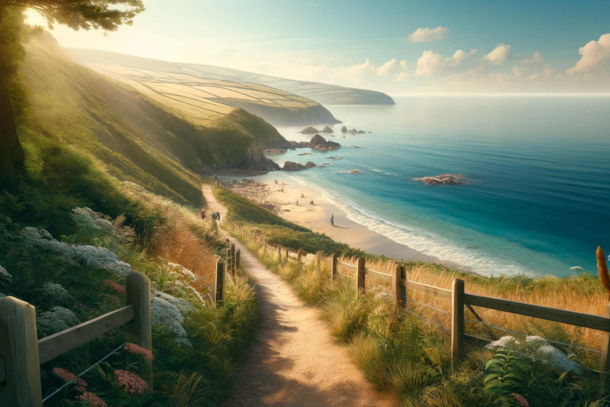
Exploring the UK’s Most Serene Coastal Trails
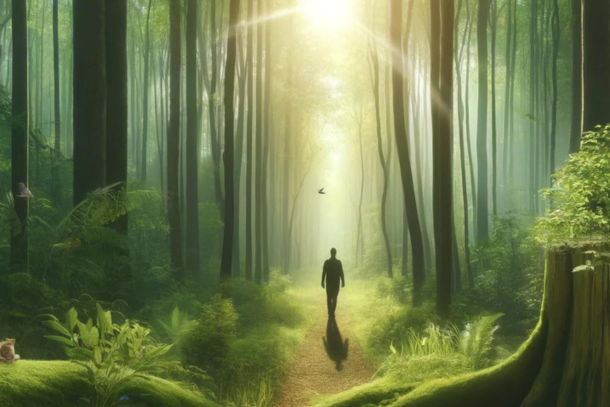
The Healing Power of Nature: Forest Bathing Explained
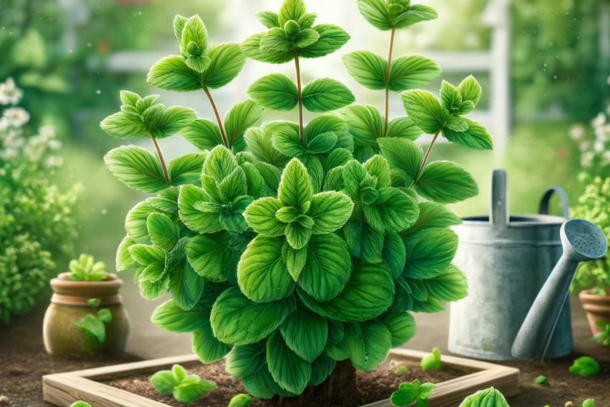
Sustainable Gardening: Tips for Growing Your Own Herbs
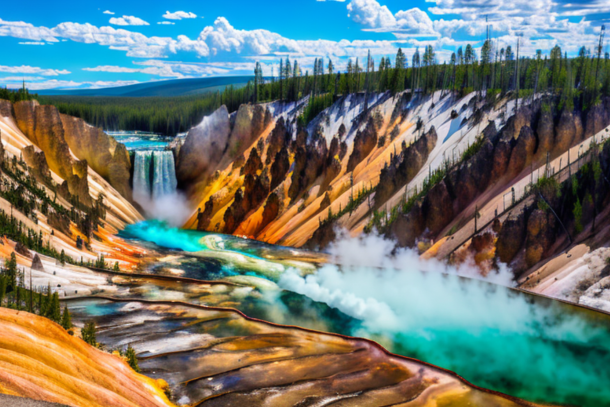
The Yellowstone Supervolcano: A Sleeping Giant

The Lost City of Atlantis: A Geological Mystery
